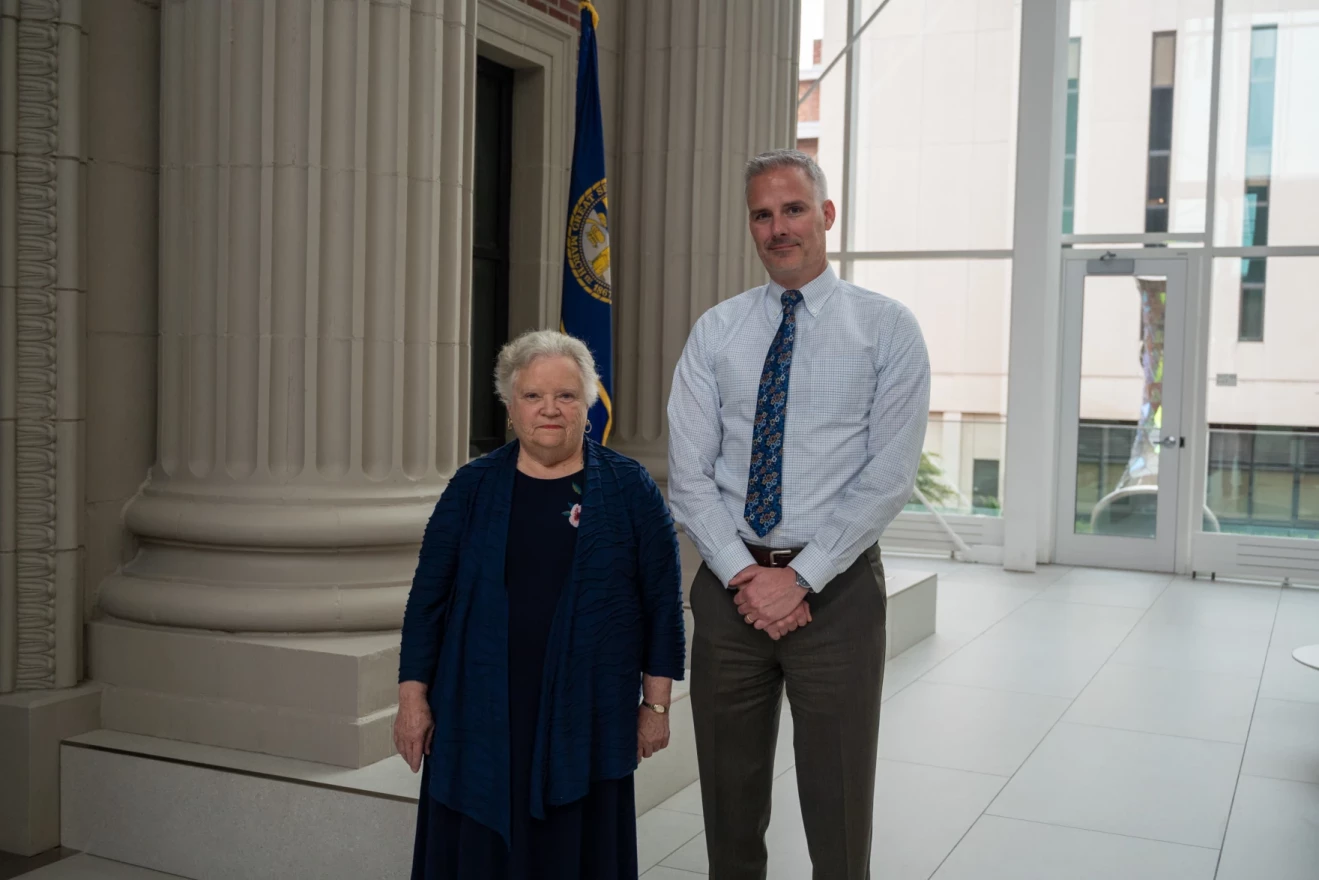In the middle of January of 2011, 16-year-old Jacob Peters developed a bad cough.
Doctors initially diagnosed him with an upper respiratory infection. But when Jacob didn’t improve, his father, Gary Peters, said they started feeling around his son’s neck.
"Then they ordered a chest X-ray and found a three-inch tumor right below his collarbone that was compressing his trachea," he said.

Gary remembers Jacob as an active, healthy teen who played multiple sports. So he was shocked when his son was diagnosed with an aggressive type of cancer. He passed away less than a year later while undergoing chemotherapy.
"He fought hard for 290 days," Gary said. "And actually, in the end, the chemotherapy is what killed him. He died of sepsis and multiple organ failure because his body just couldn't take it anymore."
The Peters family lives in Aurora, Nebraska, a small, rural farming community in the central part of the state.
In the years surrounding Jacob’s illness, multiple kids in Aurora were also diagnosed with cancer, Gary said. It's a worrying coincidence, given childhood cancer is incredibly rare. The American Cancer Society predicted 9,910 kids under the age of 15 will be diagnosed with cancer this year.
"The average class size in Aurora is probably 95 — 90 to 100 kids, somewhere in there," Gary said. "And so when you have seven kids at one time that have cancer, that's a pretty big deal."
It’s unclear what caused the kids to get sick. Gary says it was probably a number of factors.
But one possibility continues to bother him: What if it’s something in the water?
"There is no scientific causality. There is no proof that anything in the water is causing this, but it's awfully suspicious," he said.
'Maybe this 10 isn't such a great idea'
About a decade ago, a team of researchers at the University of Nebraska Medical Center started looking into the possibility of a connection between water quality and pediatric cancer.
Nebraska has the highest rate of pediatric cancer in the Midwest.
Eleanor Rogan, a public health researcher for the ongoing study at UNMC, said the center started looking at rural Nebraska watersheds, and found a correlation between pediatric cancer and higher rates of nitrate, which comes from farm fertilizer, as well an herbicide called Atrazine.
The watersheds that correlated with higher cancer rates often had nitrate levels below the U.S. Enivonmental Protection Agency’s current safe contaminant level of 10 parts per million.
The nitrate standard was set decades ago to prevent methemoglobinemia, also known as blue baby syndrome. Even so, it is common for farming communities across the Midwest to have elevated levels of nitrate that still meet federal standards.
Recent studies have linked nitrate with other health issues like colorectal cancer and thyroid disease.
But Mary Ward, a senior investigator at the National Institutes of Health and a leading expert on nitrate, said it’s still too early to make any firm conclusions.
"We really need more ongoing studies to study this connection between nitrate and health, including specific cancers and adverse reproductive outcomes," she said.
The EPA has started to look into the issue. Nitrate is scheduled for a health reassessment that could lead to a lower standard.
The agency initially slated that study for 2017, but ended up putting it off.
Additional hurdles mean progress is slow
Some environmental health experts are concerned officials aren’t acting fast enough.
"I will say I worry a lot, like, if in 15, 20 years, the evidence becomes more conclusive and we realize that things like nitrate do cause cancer with certainty," said Dave Cwiertny, the executive director of the Center for Health Effects of Environmental Contamination at the University of Iowa. "We're going to feel really bad about how long we've sort of had an inkling and not acted on it."
But setting up the comprehensive studies needed to collect conclusive evidence on nitrate’s potential impacts on health can be really difficult and complicated, Cwiertny said.
"You need access to water quality data, or people who will let you take samples and test their water quality," he said. "You need access to public health data. A lot of that is often protected."

Another aspect that concerns experts is that meeting the EPA’s current nitrate standard is already difficult for many communities. Reverse osmosis systems that filter nitrate from water are incredibly expensive.
"The problem of nitrate whether it's at 10 parts per million, or if the EPA decides to lower it to eight parts per million, or six parts per million, that problem is going to be sent on then to those small communities. So we’re going to have to absorb the cost," said Don Coulter, a pediatric oncologist at the University of Nebraska Medical Center, who’s involved in the ongoing nitrate study.
Coulter said that’s why it’s important that officials put resources behind helping rural communities and farmers to make drinking water safer.
Natalie Krebs is a health reporter at Iowa Public Radio.
This story was first published by Iowa Public Radio. This version was produced in partnership with Harvest Public Media, a collaboration of public media newsrooms in the Midwest. It reports on food systems, agriculture and rural issues.
Copyright 2023 KCUR 89.3. To see more, visit KCUR 89.3. 9(MDA4OTAxNzAzMDEzMjc0MTc2MzA5ZDZlMw004))







